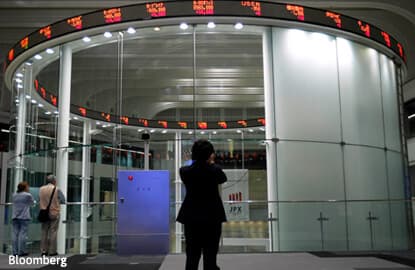
Retail investors in Asia ex-Japan are adopting more conservative risk profiles and shorter investment horizons due to the uncertainties in the global market.
According to the latest Cerulli Associates report, The Cerulli Edge — Asian Monthly Product Trends Edition released on Oct 25, the proportion of investors with conservative/stable risk profiles has almost doubled to 30% from 15.3% last year.
Conversely, respondents with balanced/growth and active/aggressive risk profiles declined by 11.3% and 3.4% respectively. Meanwhile, the proportion of investors with investment horizons of three years or less rose to 48.4% from 39.1% last year.
According to Cerulli Associates’ analysis on Malaysia, income-generating mixed-asset funds have been drawing inflows since September last year. Fund categories such as Equities Malaysia, Equities Real Estate and Equities Asia-Pacific ex-Japan have also attracted net new flows while foreign equity funds recorded negative net new flows. What does this tell us about investor behaviour?
“Investor sentiment in the Malaysian market was hit last year by falling oil prices, a weakening currency, the implementation of the 6% Goods and Services Tax, a slowdown in the property market and political uncertainties. This explains the popularity of conservative fund investments in 2015, which is expected to last for at least the rest of this year as the cloud of uncertainty remains,” says Cerulli Associates Asia Pte Ltd senior analyst Ivan Han.
“Many Asian investors had a home bias during the period under review, which saw the unfolding of many events. They included China’s economic slowdown and currency decline in the early part of the year, debates on the US rate hike and developments in the European economies, including the impact of Brexit.”
According to news reports, the Securities Commission Malaysia is considering initiatives to grow its exchange-traded funds (ETF) market, including reducing the cost of such products. Subject to actual implementation, Han thinks it is a good idea to make the asset class available to investors at a low cost.
“The number of ETFs in Malaysia is currently limited and measures are needed to create awareness and growth of the market. But it is too early to assess the impact on net new flows on long-only mutual [unit trust] funds,” he says.
“Having said that, long-only funds will continue to have a prominent place in investors’ portfolios, as we have observed in other Asian markets. They also form part of some Malaysian investors’ long-term portfolios, while ETFs continue to be used tactically in overall portfolio allocation.”
According to the report, there is growing demand for low-risk investments, given the choppy global market. Examples of such investments include money market funds and bond funds with lower risk, says Han.
Investors in Asia ex-Japan generally have higher cash holdings this year compared with last year, says the report. Investors in other Asian markets, except India, have pared down their exposure to unit trust funds and ETFs.
“The top three asset classes held by investors in Asia — except India — are cash and deposits, directly held stocks and investment properties, excluding the primary residence. Mass affluent investors in these countries generally hold more cash and equity investments than affluent and high-net-worth investors,” says the report.
“Wealthier investors with more capital and investment choices, on the other hand, have more diversified portfolios with greater weight in funds managed by third-party investment managers, bonds and alternatives, compared with mass affluent investors. This can be attributed to the lumpiness of these asset classes, which tend to require larger minimum investments.”
Meanwhile, the shift from other asset classes to alternative investments across the region was muted in the past year. The report says China is the only country to show more than a 1% uptick in holding alternative assets during the period.
Han says the key reason investors have yet to shift to alternative investments is because of a lack of understanding of these products. Many investors also feel that the products are too risky for their liking.
“The results indicate that there is some interest in alternative investments, especially in China and India. However, the growth of assets under management (AUM) in this area is likely to remain muted due to a conservative investor base. These investors are unlikely to devote a large proportion of their portfolios to these investments now,” he notes.
According to the report, the AUM in active and passive funds increased 0.4% and 2% respectively in August. Active funds received US$9 billion in net new flows during the month and collected US$53.5 billion in net subscriptions from March to August.
“Passive funds drew in US$4.7 billion of net new flows in August, led by ETFs, which saw US$3.6 billion worth of inflows. On the other hand, index funds and feeder funds saw inflows of US$903 million and US$188.9 million respectively during the month.”
The survey covered 1,800 investors with financial assets of at least US$100,000 in six key markets — China, Hong Kong, India, South Korea, Taiwan and Singapore.
Save by subscribing to us for your print and/or digital copy.
P/S: The Edge is also available on Apple's AppStore and Androids' Google Play.